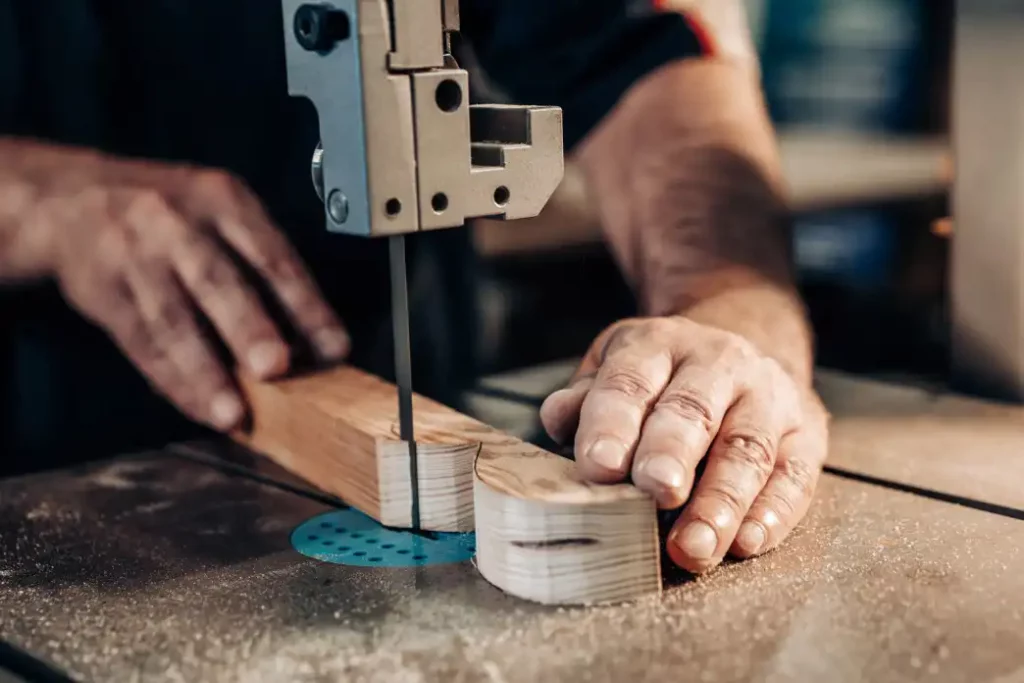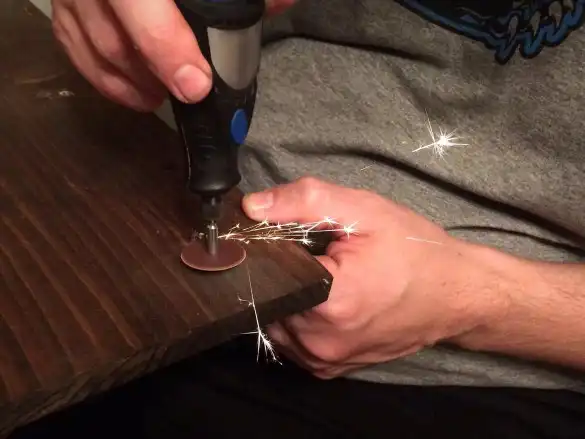Features and functions of a jigsaw
Variable speed
Of all jigsaw features, the variable speed makes projects more successful. Some jigsaws have a fixed saw speed, around 2,500 strokes per minute for woodwork. Some jigsaws have a low saw speed, suitable for metals and harder materials. Look for a cutting tool with a variable speed setting that will allow you to adjust from zero to around 3,000 strokes per minute.

Blade change
The saw blade is quickly changed. Some jigsaws need a careful change, but some are with tool-less chucks, allowing you to switch from one saw blade to another. The saw blade fits securely in place to avoid any accidents during the actual work.
Adjustable angle cuts
Look for a jigsaw with adjustable angle cuts, as most projects would require you to do so. That is why you have to opt for a jigsaw that can bevel, with a bi-sided bevel capability. With this feature, you can make accurate cuts.
LED light
Light helps in cutting solid materials while using a blade. Invest in a jigsaw with an LED light feature that will allow you to work even in poorly illuminated areas. With the LED light feature, you can avoid any accidents from cutting.
Laser guide
The laser guide is an upgrade to the traditional carpenter’s pencil. It serves to mark the line and guide your cut, for an accurate cut.
Vibration reduction
Using a jigsaw comes with less vibration when cutting. Cutting harder materials yields constant vibrations that can make you fatigued after prolonged operation. That is why you should look for a tool with a vibration reduction feature, so you can be comfortable using it for long hours.
Blade
Jigsaws are more delicate than other powered saws, and their thin blades can be fitted into tight spaces and follow a curved line with ease. In addition to the shape of their saw blade, jigsaws are not heavy, so they are easy to manoeuvre and guide along with stencilled designs.
Cutting guide
Cutting a circle with a jigsaw is possible. Circles of any size can be cut with a jigsaw, either freehand or using a circle cutting guide. Although jigsaws excel at making curved cuts, they can also be used to make plunge cuts, straight cuts, and bevel cuts.
Features and functions of a Dremel
Accessories
Dremel is a rotary tool with a cord, four attachments, and thirty-four accessories. An effective ventilation system makes the workspace conducive and prevents heat. That is why the Dremel tool has managed to be noise-free and smooth.

Electronic control feedback
Dremel comes with electronic feedback control that informs you when something is not working, including speed and too much pressure. If your grinding becomes too hard, you get a signal.
You have control over what happens with the rotary tool. Dremel introduces a speed dial feature that you turn on and off quickly with ease. You are allowed to change the speed even when you are operating the rotary tool without stopping it, giving the rotary tool maximum performance.
The separate speed controls are handy when completing your tasks, with a beautiful ergonomic design. You do not have to strain yourself when using the tool. It feels comfortable and comes with a cord that connects to the power.
Dremel comes with better attachments, although it allows some dust to get inside the rotary tool. You can use compressed air to get rid of the particles. The rotary tool is solid and durable. In case of an accident, it does not break easily.
Motor
The tool combines practicality and technology, and the motor brings out maximum performance. There is a balance between power and ease of manipulation. The rotary tool is ideal for professionals, and it is user-friendly.
Grip
The rubber grip makes the operation comfortable, and holding the rotary tool in your way makes you comfortable. You have no fear of having the tool slipping off your hands. Compatibility is one of the strengths of the rotary tool. It comes with more accessories that it works with and a slim and ergonomic body. The 360-degree grip zone gives you additional comfort, and that extends usage.
Speed dial
The speed dial assists you in controlling and monitoring speed. The dial is in an area that does not disturb your operation. It is far from the handle. A separate On/Off switch makes the Dremel tool easy to use.
Motor
The motor is strong enough to deliver maximum performance at all speeds. The speed varies from 5,000 to 35,000 rpm, consisting of an electronic feedback circuitry with notifications when there is a fault or when the rotary tool is at risk, allowing consistency in performance even on tough tasks.
Differences
- Jigsaw is more suited for repeated cuts, while Dremel is for finishing cuts.
- Less vibration comes from the jigsaw.
Similarities
- They both have variances in speed.
- They have multiple accessories and attachments.
Price Comparison
Jigsaw saws cost anywhere between 30 and 300, as prices will vary from one brand and model to the next, making it more affordable than Dremel.
FAQs
Can a Dremel be used as a jigsaw?
Yes. The Dremel is for extended cuts, while a jigsaw is more suited for cutting repeatedly.
Does a Dremel have a saw attachment?
Yes, it does.
How do you use a Dremel saw blade?
It has to be at high speed. The saw is a handheld saw that allows users to make precise, clean, and straight cuts in multiple materials using compact cutting wheels.
How deep can a Dremel cut?
It cuts up to 3/4inch.
How deep can a Dremel ultra saw cut?
Its maximum depth is 3/4inch.
Can you cut a 2×4 with a Dremel?
Yes, but it will take a long time. You could use a rotary burr bit.
Can a Dremel be used as a router?
Yes but a Dremel is used as a low-power Router.
What is a jigsaw best used for?
Jigsaws are for cutting shapes and curves in wood.
What can you make with a jigsaw?
The jigsaw makes both straight and curved cuts in a wide variety of materials.
Is jigsaw good for DIY?
Jigsaws are versatile and easy to use, helping you tackle a range of DIY.
Can you cut wood with a jigsaw?
The jigsaw cuts multiple materials, including wood, particleboard, plywood, plastic, metal, even ceramic.
How do you use a jigsaw for beginners?
- Select the right blade.
- Set up the Jigsaw.
- Set Up Material.
- Cutting the Material.
- Clean Up.
- Grain and Sheen: Teak Oil versus Danish Oil Uncovered - January 10, 2024
- The Cherry on Top: Crafting the Perfect Cutting Board - January 9, 2024
- Polyurethane Water-Based vs Oil-Based: Choosing the Right Finish - January 8, 2024